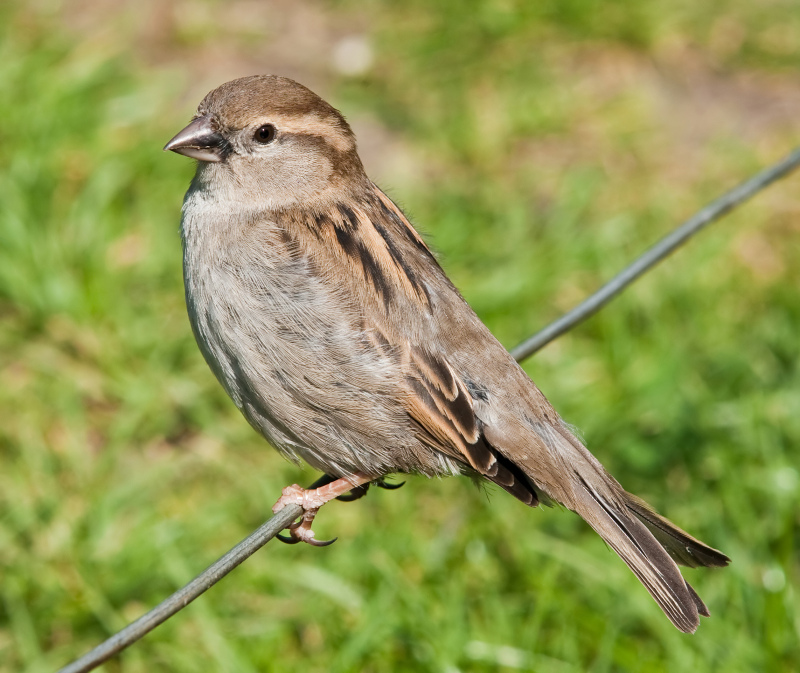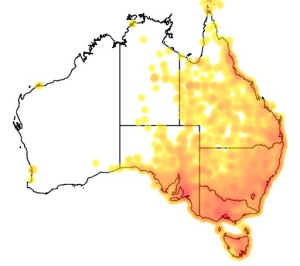Colours
Distinguishing features
Its plumage is mostly different shades of grey and brown. The sexes differ: the female is mostly buff, and the male has bolder markings and a reddish back.
The male has a dark grey crown from the top of its bill to its back, and chestnut brown on the sides of its head. It has black around its bill, on its throat, and on the spaces between its bill and eyes (lores). It has a small white stripe between the lores and crown and small white spots immediately behind the eyes (postoculars), with black patches below and above them. The underparts are pale grey or white, as are the cheeks, ear coverts, and stripes at the base of the head. The upper back and mantle are a warm brown, with broad black streaks, while the lower back, rump and uppertail coverts are greyish-brown.
The male is duller in fresh non-breeding plumage, with whitish tips on many feathers. Wear and preening expose many of the bright brown and black markings, including most of the black throat and chest patch, called the "bib" or "badge". The badge is variable in width and general size, and some scientists have suggested that patches signal social status or fitness, a hypothesis which has led to a "veritable 'cottage industry'" of studies, which have only conclusively shown that patches increase in size with age.
The female has no black markings or grey crown. Its upperparts and head are brown with darker streaks around the mantle and a distinct pale supercilium. Its underparts are pale grey-brown. The juvenile is similar to the female adult but deeper brown below and paler above. Juvenile males tend to have darker throats and white postoculars, but these features do not reliably match sex. (Wikipedia)
Size
- From 14 cm to 18 cm (Length of specimen)
Wingspan
- Up to 25 cm
Synonyms
Distribution
Distribution and habitat preferences
It occurs naturally in most of Europe, the Mediterranean region, and much of Asia. Its intentional or accidental introductions to many regions, including parts of Australia, Africa, and the Americas, make it the most widely distributed wild bird.
Though found in widely varied habitats and climates, it typically avoids extensive woodlands, grasslands, and deserts away from human development. (Wikipedia)
Local abundance
- Cape Kidnappers, New Zealand: abundant
Audio recordings
Diet
It feeds mostly on the seeds of grains and weeds, but it is an opportunistic eater and commonly eats insects and many other foods.
It has the ability to survive without water by ingesting berries. (Wikipedia)


